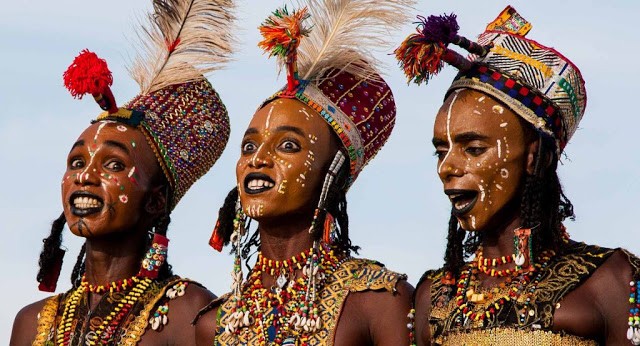This post discusses the cultural heritage of Chad, it explains the culture and further list and explain the heritage sites that can be found therein.
CULTURE OF CHAD
Chad is an ethnically diverse nation with a very interesting and colorful culture. The Colonial French rule has influenced their contemporary society, but about 200 ethnic groups still live in the country. Although there have been plenty of attempts to unify them, they continue to live and operate autonomously. Major tribes are classified according to where they live with the south area home to the Sara people, who are predominantly Christian, while the north is inhabited mostly by Muslim nomadic tribes. The Sahel region in central Chad is home to a mix of sedentary and nomadic people.
The government does not offer a lot of support for the arts, but there are a few individual galleries funded and run by artists in N’Djamena. Each ethnic group has its own literary tradition. Most of the written materials in the city are in French, but there are also some books and publications in Arabic. Performing arts are generally nonexistent, though religious rituals are common.
Read: REGIONS OF CHAD
Chadians are generally friendly and relaxed, but they expect foreigners to respect their customs and beliefs. Dress is informal, but conservative to show respect for the Muslim laws. Muslim areas are strictly segregated between women and men. Shaking hands is customary, and the left hand should not be used when accepting or offering food.
FOOD IN DAILY LIFE
Patterns of food production and consumption are rather diverse across the various ethnic groups. There is no shared “national food culture,” although the one dish fairly common throughout the country is a kind of set grain porridge, made of sorghum or millet flour, served with sauces that contain meat, dried fish, tomatoes, onions, and good spices. Some north-south divide is apparent in food traditions. In the south (in contrast to the north) there is no fish in the diet, and there is less consumption of milk products from livestock herds. The diet of southern peoples also shows more variety in the forest products, tubers, spices, and fruits that are consumed. Staple foods, apart from sorghum and millet, are maize, manioc, potatoes, rice, sesame, and some bean species.
CULTURAL HERITAGE
Cultural heritage is the heritage of tangible and intangible heritage assets of a group or society that is inherited from past generations. Not all heritages of past generations are “heritage”; rather, heritage is a product of selection by society.
HERITAGE SITES IN CHAD
LAKES OF OUNIANGA
The Lakes of Ounianga are a Heritage Site located in the Sahara Desert of Chad. This site comprises 18 interconnected lakes in an extremely arid region, making it a unique and rare ecosystem. The Ounianga lakes are a remarkable example of how the natural environment can adapt and thrive in extreme conditions. These freshwater lakes are home to various unique and endemic species of flora and fauna, making it an important site for biodiversity conservation. Additionally, the site is a testament to the ingenuity of humans who have developed sustainable water management techniques in a challenging environment for centuries.
ENNEDI MASSIF: NATURAL AND CULTURAL LANDSCAPE
Ennedi Massif: Natural and Cultural Landscape is a Heritage Site in Chad. This vast sandstone plateau is home to a unique ecosystem featuring stunning natural formations such as rock arches, canyons, and waterfalls, as well as an array of rare and endangered species, including the Barbary macaque and the Saharan cheetah. In addition to its natural beauty, the Ennedi Massif is also home to a number of prehistoric rock art sites, providing insight into the cultural history of the region.
CHAD TENTATIVE LIST
- Le site métallurgique de Begon II
- Site à Hominidés anciens du Djourab
- Les ruines d’Ouara
- Les curieuses mines de fer de Télé-Nugar
- Gravures et peintures rupestres de l’Ennedi et du Tibesti
- Parc national de Zakouma
- Paysage culturel du Lac Tchad
